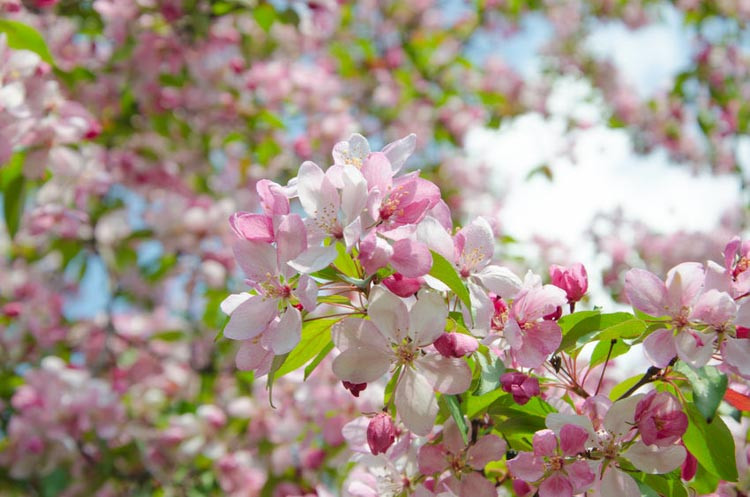Malus (Crab Apple)
Crab apple trees, members of the Malus genus, exhibit a diverse range of growth habits, typically forming a compact, rounded canopy of branches. They can also present in a more upright or spreading form, depending on the specific cultivar.
Hardiness: These deciduous trees are hardy and capable of thriving in USDA zones 4 through 8, showcasing their adaptability to various climatic conditions. Their resilience is further displayed through their tolerance of different soil types, though they prefer well-draining soil and full sunlight for optimal growth.
Flowers: Spring ushers in a spectacular display of blossoms, with crab apple trees covered in clusters of fragrant flowers. The bloom time, occurring between April and May brings forth an array of colors ranging from white and soft pink to vibrant reds, depending on the cultivar. This floral spectacle not only enhances the aesthetic appeal of landscapes but also serves to attract a variety of pollinators, contributing to the biodiversity of the area.
Uses: Crab apples have various uses in both residential and public landscapes. They are widely appreciated as ornamental trees, providing multi-seasonal interest through their spring blooms, attractive foliage, and colorful fruit in the fall and winter. Some cultivars produce fruit suitable for making jellies, adding a functional aspect to their ornamental value. Moreover, these trees are often utilized for their ability to provide shade in garden settings.
Benefits: The benefits of planting a crab apple tree extend beyond their visual and practical contributions to the landscape. They play a crucial role in supporting local ecosystems, offering food and habitat for birds and other wildlife. Additionally, their dense foliage can act as a natural screen, enhancing privacy and reducing noise pollution. Overall, crab apple trees offer a combination of beauty, utility, and ecological support, making them a cherished choice for various landscaping needs.

